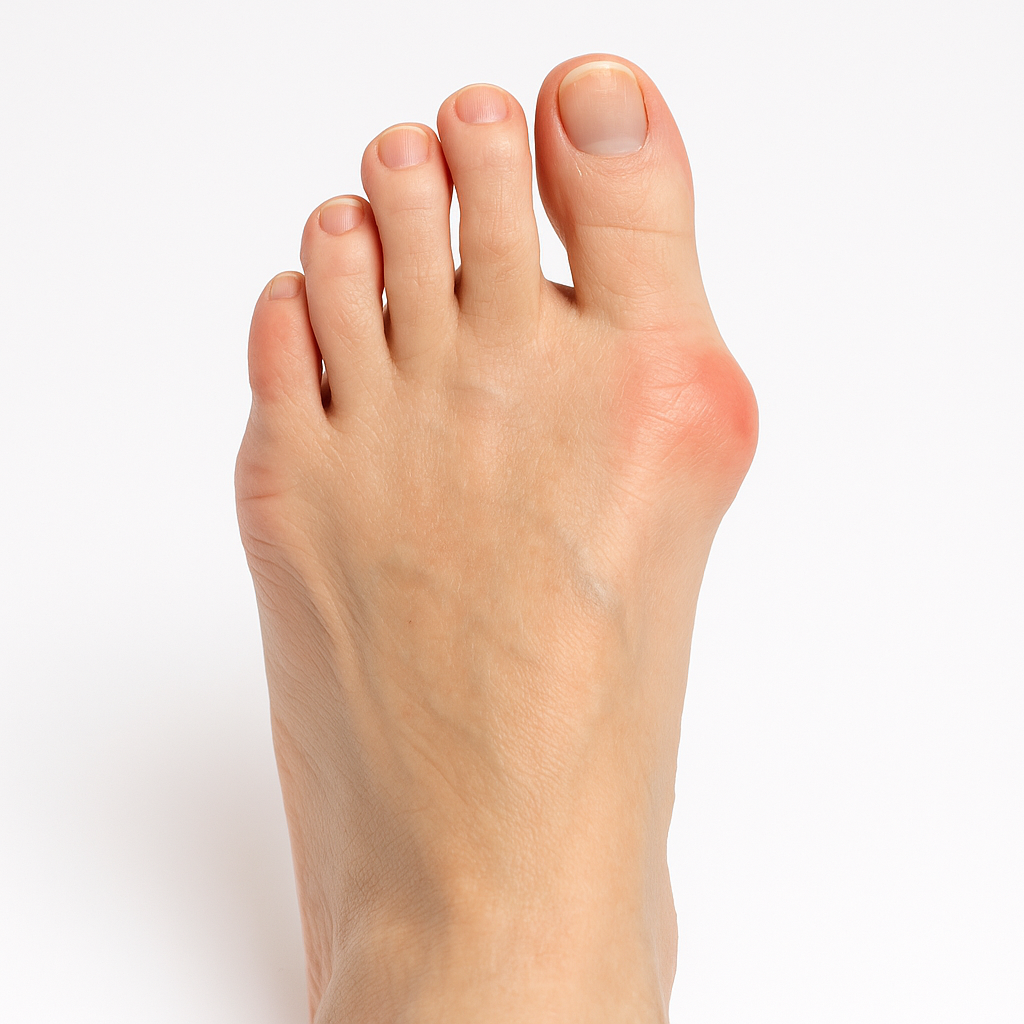
BUNIONS
A bunion is more than just a bump on your foot. It’s a progressive condition that affects the joint at the base of your big toe and can cause pain, stiffness, swelling, and difficulty wearing shoes comfortably. Bunions form when the big toe slowly shifts out of alignment, creating a visible bony prominence.
Whether you’re noticing a mild bump or dealing with more advanced symptoms, we’re here to help ease your discomfort, restore your mobility, and protect your long-term foot health.
What Causes Bunions?
Bunions develop gradually, often from a combination of factors, including:
Wearing tight, narrow, or high-heeled shoes
Genetics (family history of bunions)
Flat feet or abnormal walking mechanics
Arthritis or joint damage
Previous injury to the foot
Signs and Symptoms
A visible bony bump at the base of the big toe
Pain when walking or wearing shoes
Redness, swelling, or calluses over the bump
Limited movement of the big toe
Overlapping of the big toe with the second toe
BUNION TREATMENTS
TRY AT HOME
Switch to wider shoes with a roomy toe box
Use bunion pads or cushions to reduce friction
Take over-the-counter anti-inflammatory medication as needed
IN-OFFICE CONSERVATIVE CARE
When you visit us, we’ll perform a careful exam and may take X-rays to check toe alignment. Depending on your symptoms and lifestyle, your treatment plan may include:
Custom orthotics to improve alignment and reduce pressure
Padding or taping to relieve discomfort
Cortisone injections for inflammation and pain
Physical therapy for joint mobility and strengthening
Shoe analysis and footwear guidance
ADVANCED & SURGICAL TREATMENT
If conservative care isn’t enough, surgery may be recommended to correct the misalignment and restore comfort. Options include:
Osteotomy: Realigning the bone (Chevron, Scarf, or Akin techniques)
Tendon or ligament repair: Restoring joint balance
Arthrodesis: Fusion of the joint in severe or arthritis-related bunions
Exostectomy: Removal of the bony bump
Resection arthroplasty: Removing damaged joint surfaces
Lapidus procedure: Fusing the first metatarsal bone for lasting correction
Frequently Asked Questions About Bunions
-
Not always. Some bunions may not hurt initially, but they often worsen over time if left untreated.
-
No. Bunions are progressive and will not reverse without treatment. Early care helps slow progression.
-
Yes. Supportive shoes, orthotics, and avoiding tight footwear can reduce pressure and slow progression.
-
No. Many patients find relief with non-surgical care. Surgery is only considered if pain or deformity persists despite conservative treatment.
-
Your surgeon will realign the bones, correct soft tissue imbalance, and remove the bony prominence. Most procedures are outpatient, meaning you go home the same day.
-
First 6 weeks: Limited weight-bearing with a surgical shoe or boot.
6–12 weeks: Gradual return to activity.
3–6 months: Most daily activities resume. Full healing may take 6 months or more.
Disclaimer: The information on this website is for educational purposes only and should not replace professional medical advice, diagnosis, or treatment. Always consult your doctor with any questions about your health.
